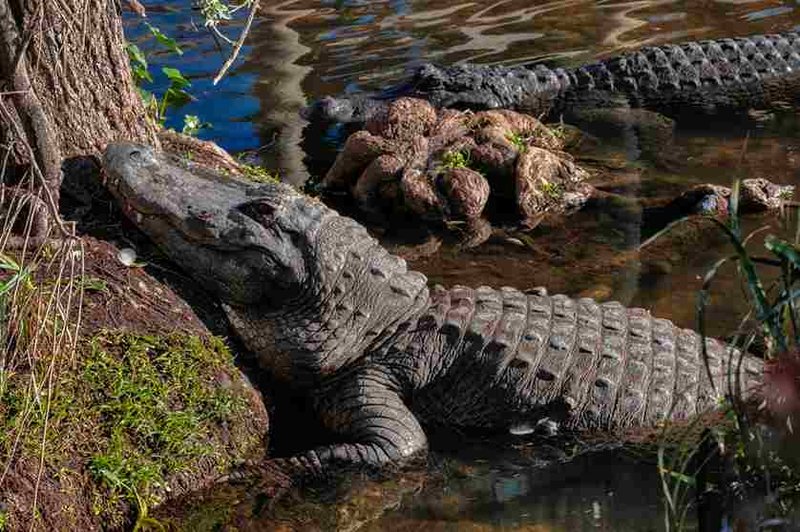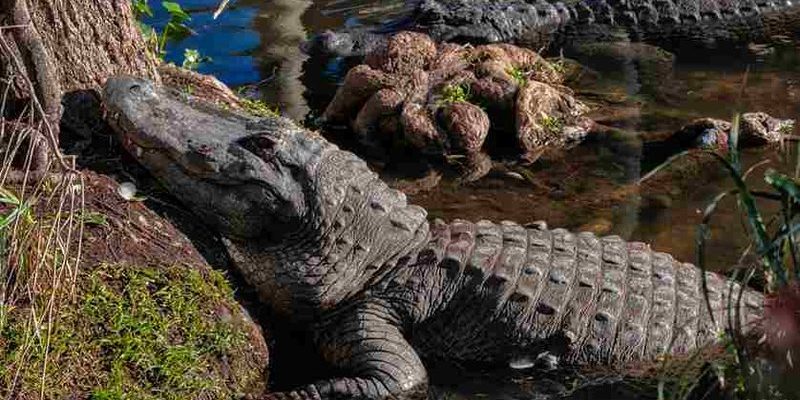
These charismatic creatures are more than just the stuff of legends and horror movies. They are often called “keystone species,” meaning their presence or absence can significantly affect their environment. When you learn about their habits, habitats, and relationships with other species, you’ll see how crucial they are in sustaining various wildlife populations. So, grab your favorite drink, and let’s explore the wonderful role of the American alligator!
Habitat of the American Alligator
The American alligator primarily resides in freshwater environments, such as swamps, marshes, rivers, and lakes. This reptile thrives in the warm, humid climate of the southeastern United States, with a large population found in Florida and Louisiana. These habitats provide not just a home, but also essential resources like food and breeding grounds.
To understand their habitat better, think of it as a bustling underwater city. There are shallow areas for basking in the sun, deep pools where they can hide from threats, and plenty of vegetation for both shelter and hunting. The alligator’s ability to adapt to various aquatic environments allows it to thrive in different conditions, from the tranquil bayous of Louisiana to the coastal wetlands of Florida.
Alligators are also masters of camouflage. Their dark, scaly skin helps them blend seamlessly into the murky waters and swampy vegetation. It’s like they’re wearing nature’s best disguise! This adaptation not only aids their hunting but also protects them from other predators.
The Alligator’s Role as a Predator
As apex predators, American alligators play a critical role in controlling the populations of various species. By preying on fish, birds, and small mammals, they help maintain a balanced ecosystem. When alligator populations are healthy, they regulate the sizes and behaviors of their prey, which can prevent overgrazing and overpopulation of certain species.
Here’s the thing: without alligators, certain fish species could proliferate, leading to a decline in plant life in aquatic ecosystems. This domino effect can disrupt many other creatures that rely on those plants for food and shelter. So, the next time you hear about alligator hunting, consider their essential role before forming an opinion—balancing populations is no easy task.
Additionally, the alligator’s feeding habits help create “alligator holes.” These depressions in the muddy bottoms of swamps become vital habitats for other wildlife, especially during dry seasons. When water levels drop, these holes can be life-savers, providing refuge for fish, amphibians, and other animals.
Nesting and Reproduction
When it comes to nesting, alligators are quite the dedicated parents. Female alligators build nests from vegetation near the water’s edge, where they lay anywhere from 20 to 50 eggs. This behavior is crucial because the vegetation keeps the eggs warm and provides some protection from predators.
The hatching process is like a little miracle. After about 65 days, the eggs crack open, and tiny, noisy hatchlings emerge. What’s heartwarming is that the mother alligator fiercely protects her young during the first few years of their lives. By guarding them from threats and helping them find food, she ensures the survival of her offspring.
You might be wondering how this affects their habitat. Well, the presence of young alligators means that more animals, like birds and turtles, can thrive in the same area. The young alligators often share their space with other species, creating a dynamic and diverse ecosystem. It’s like a miniature community where everyone plays a part!
Impact on Other Wildlife
The American alligator’s influence extends beyond just its predatory behavior. They can also support the survival of other species by creating a unique environment through their activities. When they dig out alligator holes or create paths through wetlands, they’re inadvertently shaping their habitat.
These changes can attract various birds and smaller mammals looking for food or shelter. For instance, wading birds often nest near alligator-infested waters because the alligators help keep away potential predators like raccoons. You might not think of alligators as protectors, but their presence allows for a wider array of wildlife to flourish alongside them.
Moreover, alligators contribute to nutrient cycling. When they consume fish and other animals, their waste enriches the water, promoting the growth of algae and aquatic plants. A healthy population of alligators leads to a healthier ecosystem overall. It’s a cycle of life that showcases the interconnectedness of all species!
Threats to the American Alligator
Despite their resilience, American alligators face numerous threats, many caused by human activities. Habitat loss due to urban development and pollution has significantly impacted their populations. When wetlands are drained or contaminated, alligators lose their homes and food sources, putting their survival at risk.
Additionally, hunting and poaching have historically taken a toll on their numbers. Although laws now protect these creatures, poaching still occurs, driven by demand for their skin and meat. The balance of their ecosystem hangs in the balance, and every lost alligator can have a ripple effect on the habitat.
Conservation efforts are essential to ensure the future of the American alligator. Organizations and wildlife agencies work tirelessly to maintain their habitats and preserve their populations. By protecting alligators, we also protect the intricate web of life that depends on them. It’s a joint effort—saving one species benefits many others.
The American alligator is more than just a fearsome predator; it’s a vital part of its ecosystem. Through its role as a predator, protector, and habitat creator, the alligator sustains a delicate balance within its environment. Understanding this unique relationship helps us appreciate the intricate connections between all species.
As we continue to face challenges in conservation, recognizing the importance of the American alligator is crucial. By valuing their role in our ecosystems, we can take steps to protect not only them but also the countless other species that thrive alongside these fascinating creatures. So, the next time you see an alligator, remember it’s not just a reptile—it’s a cornerstone of its natural habitat!

